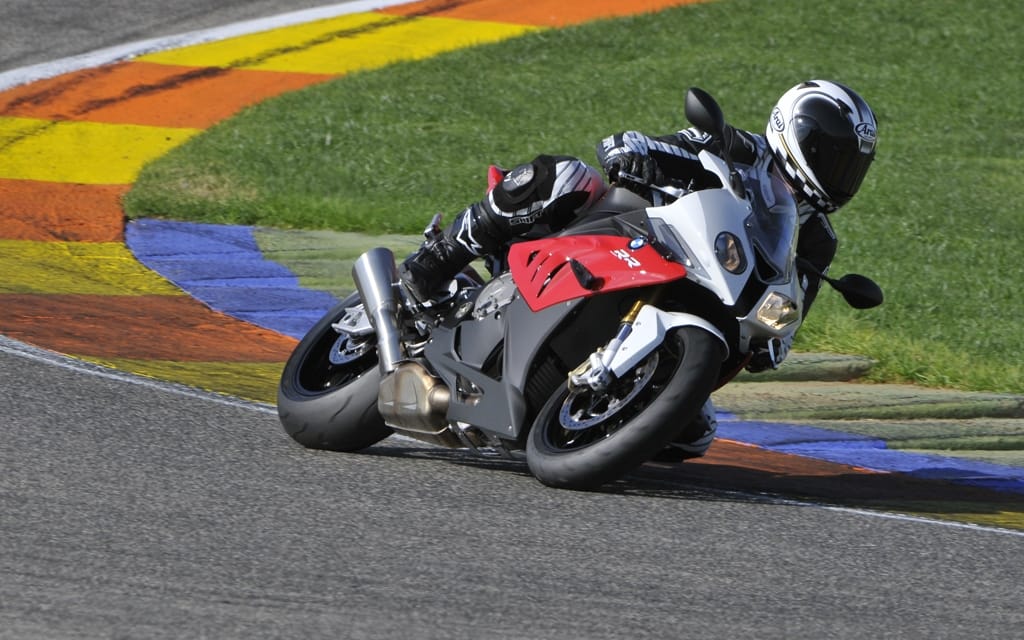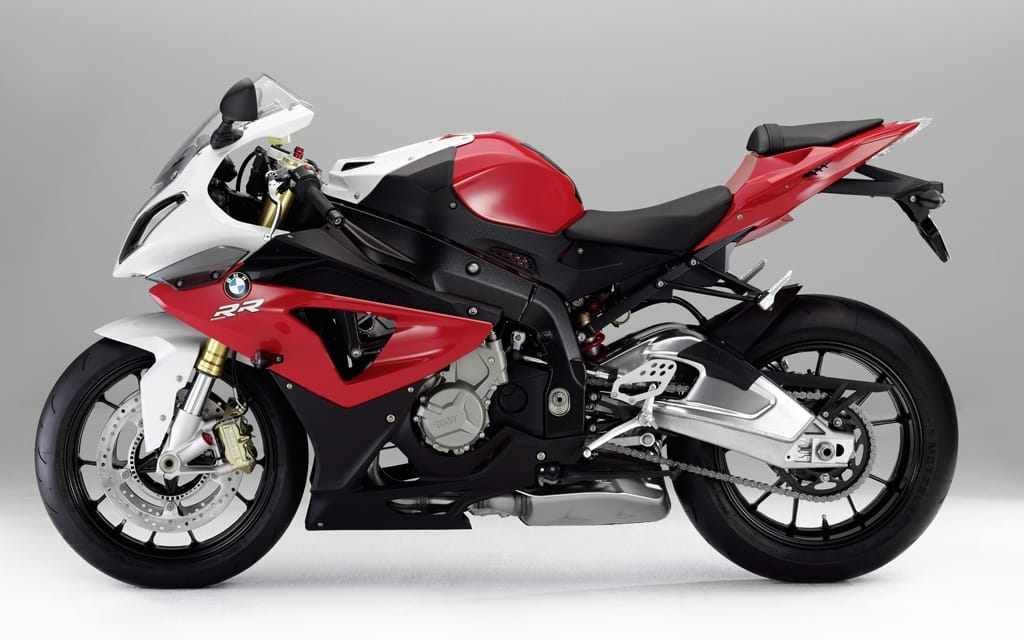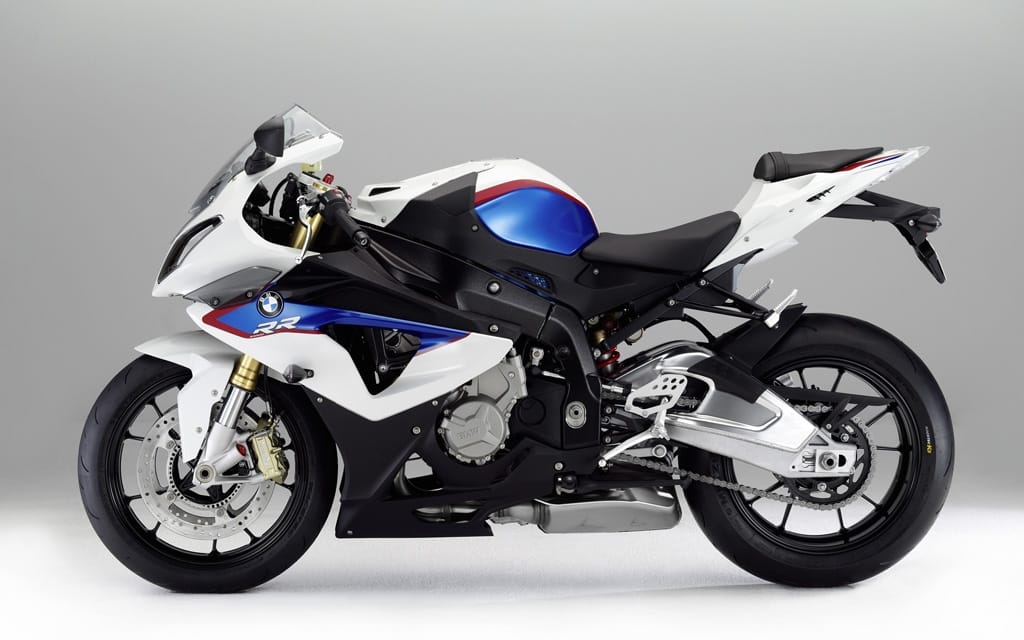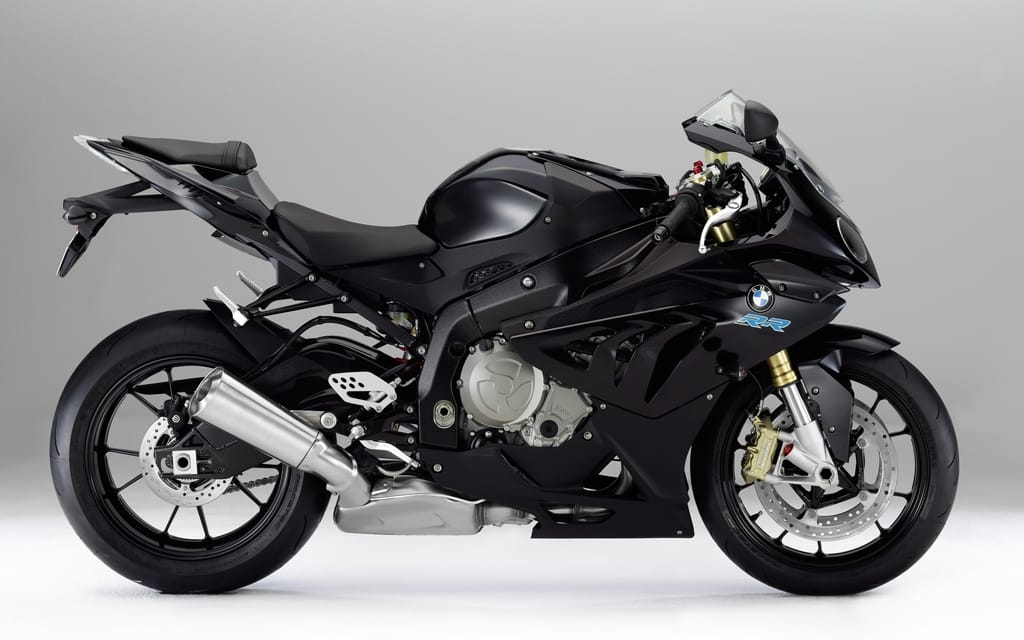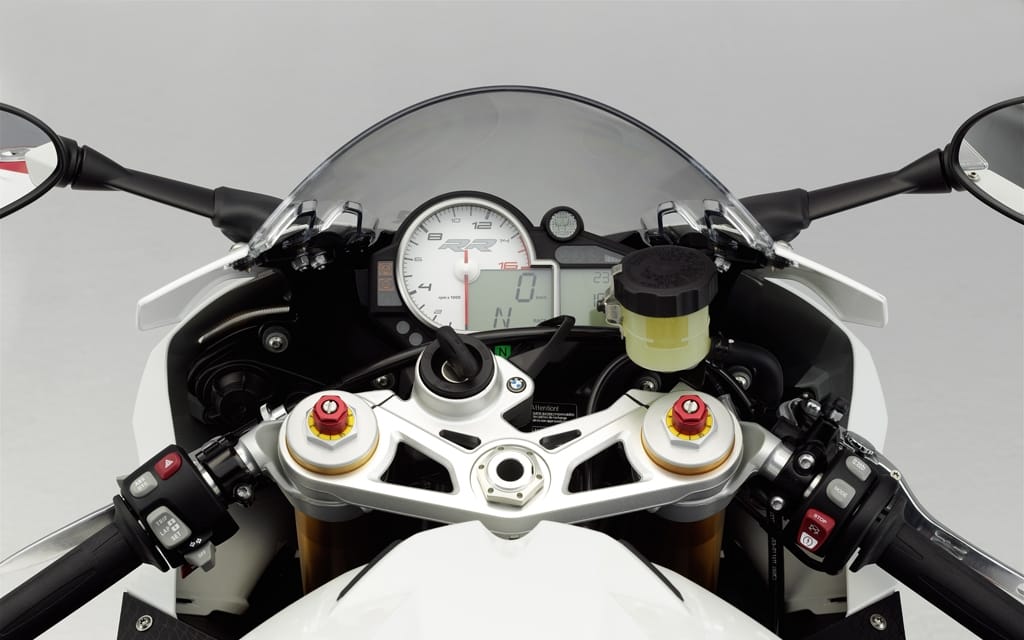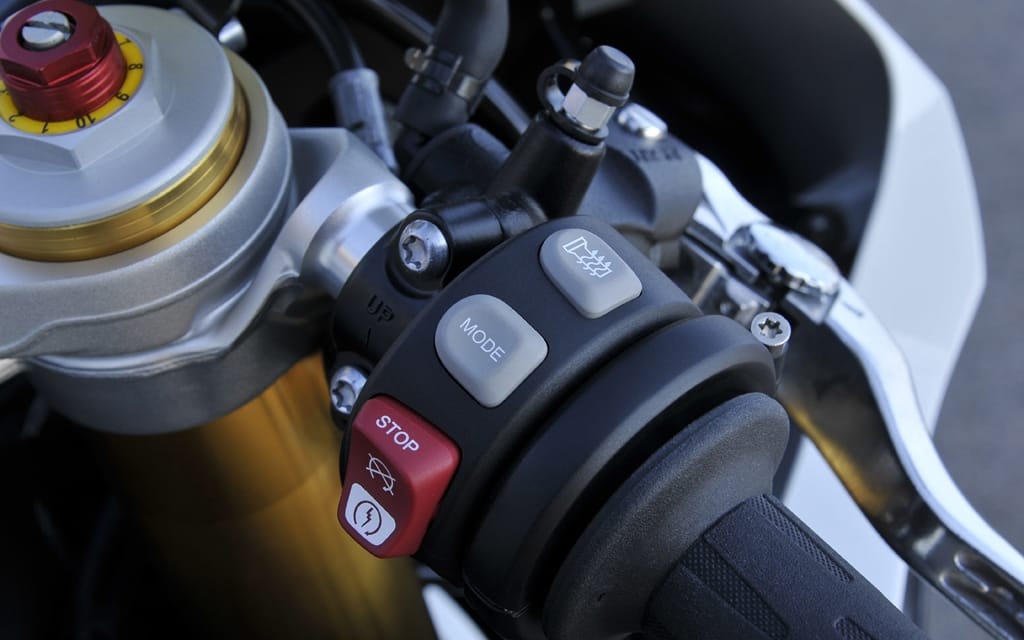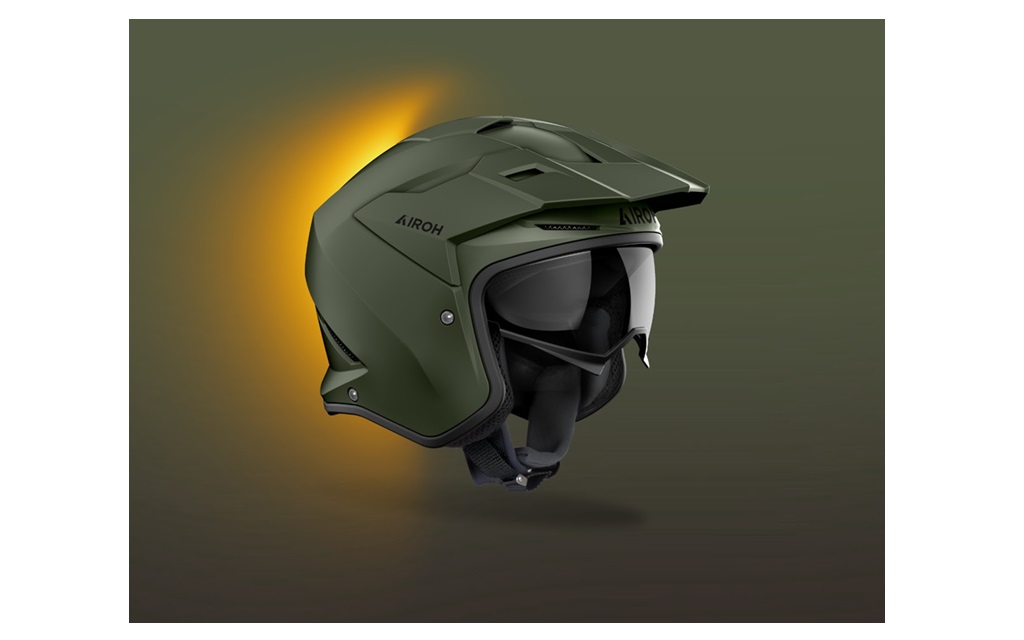Two years ago BMW built the world’s most powerful street-legal superbike. Now, in version 2.0, they have grudgingly acknowledged that with fallible humans at the controls, subtlety was a required upgrade.
You’ve got to hand it to BMW. When they announced the S1000RR superbike two years ago they must have known they’d be ripe for roasting if it didn’t deliver the goods. After all, the across-the-beam four-cylinder engine in an aluminum frame with chain final drive and a telescopic fork is a motorcycle architecture so identified with the Japanese that it might as well be trademarked. When you can’t claim mechanical distinction then you’ve only one route remaining to distinguish yourself: power, and lots of it.
The S1000RR jumped out of its crate and onto a dynamometer and registered, at 180 (give or take) horsepower, a solid 10 more than any Japanese superbike. And it cost about the same as the Japanese bikes while tossing in a pile of electronic goodies like ABS and traction control. The BMW became, at the time, perhaps the best superbike for people like you and me: riders who habitually overcook it in the wet and who lack the finesse to know when a power slide out of a corner is about to turn into a five-alarm highside.
Luckily, people like you and me are not hired to race motorcycles professionally. But the ones that are found the BMW to be, at the outer limits of racetrack performance, just a little too hard, a little too lacking in feedback. I can sail past a machine’s limit and into the gravel trap as easily as I can miss my laneway if there’s a song I like on the radio, so for me it’s a moot point, but racetrack success greatly aids the marketing of superbikes.
BMW won’t admit it, of course, but they’d be less than human if they weren’t mightily pissed off by the success of Aprilia’s RSV4 in World Superbike competition. Where the madcap Italians succeeded in delivering to a revitalized Max Biaggi a powerful, pliable motorcycle, BMW pilots complained (privately, of course) of an overly stiff chassis and difficult-to-modulate power. The 2012 iteration of the S1000RR has set out to address the old bike’s shortcomings.
There are few racetracks in the world with a more distinctive aura than the one in Valencia, Spain. The track is laid out within rolling hills that form a natural amphitheatre, and as I exit pit lane and enter the track I cast my eyes about and imagine the stands full of screaming Spaniards. I’m so distracted that I test the ABS on the first corner of the first lap. I’d better get my head into my business.
Externally the S1000RR is subtly changed. The tail section is pointier, and winglets to modulate airflow away from the rider’s hands have been added to the tops of the slightly tweaked side panels. The engine itself is unchanged, though BMW Motorrad VP Dr. Christian Landerl confessed that shortly after the model’s introduction in 2009, crankshaft weight was upped by nearly half a kilogram.
Even though I’m in the rain mode (which limits horsepower to a claimed 163 at the crankshaft) the bike is, as you would imagine, still peppy, though it’s easy to control. Whereas previously there were two torque curves, now there are three (one each for Rain and Sport, and a third for Race and Slick modes). The Rain torque curve softens not just the power, but the way in which it reaches the rear wheel. The twistgrip action on this new model is decidedly lighter and requires fewer degrees of rotation, but Rain mode moderates the engine’s response to throttle inputs, letting out power in a more progressive manner.
After my first session I’ve sorted the rights from the lefts and so I switch the power to Sport mode. With this change, throttle action shifts to “direct and spontaneous,” according to BMW, and I’m inclined to agree. Horsepower is the full 194 (again, quoted at the crankshaft) and the bike jumps between corners with vigour. Whereas the old bike had four distinct throttle curves (for each of the four modes), now there are only two: one for Rain mode and a second for Sport, Race, and Slick. The reasoning is that the rider no longer has to learn the distinct character of four modes.
But wait, there’s more: in the quest for more midrange boost there are three new power curves: one each for Rain and Sport and one shared by Race and Slick. Additionally, there are now three torque curves that take advantage of the engine’s boosted midrange power. Torque is up, says BMW, in the crucial 5,000 to 7,500 rpm range.
If you’ve never ridden a modern litrebike, it will be hard to comprehend how shockingly fast they are. Imagining your Chevy Cavalier or Toyota Corolla with 1,200 horsepower is a good place to start. BMW’s Dynamic Traction Control (DTC) continues on with its signature lean-angle sensor, and it’s as essential to controlling this motorcycle as is having air in the tires. Valencia’s turn two is a left hand kink that illustrates the effectiveness of DTC. After a big gulp of air I hold my breath, grab a fistful of throttle, and push hard on the left grip. The rear tire squirms ever so slightly to the right and around the bend I surf.
In fact DTC (and traction control in general, regardless of manufacturer) is such a revelation that competent-but-not-racer-quick riders can witness shocking decreases in lap times. But first you need to trust the software, which is not as easy as you might imagine. As we’ve written before, it’s one thing to tell yourself on pit row that at the apex of a corner you twist the throttle to the stop, and it’s quite another to summon the nerve to do it. But little by little, as the machine’s electronics are learned and trusted, you exit corners faster and faster — which reveals yet another challenge: you’re going faster and faster. Late in the day I blast down a short chute between two corners with such speed that my braking marker arrives unexpectedly. But with my knee on the ground and without fear that I’ll lock the front wheel (ABS, I love you) I do my best version of a racer-fast corner.
Chassis changes were made with an eye to increasing front-end feedback. The steering head angle is decreased slightly and the wheelbase is 9.3 mm shorter. The fork tubes are also five mm higher in the triple clamps. There is even a new steering head bearing that claims less stiction for more precise steering and it works in harmony with a mechanical steering damper.
Track day nutters will certainly appreciate the “best lap in progress” display function on the dash. This gizmo tells the rider, in real time and at 100-metre intervals, if this lap is faster than the best lap so far. If you’re on fire the dash displays a green light, indicating that you’re in the midst of a scorchingly fast lap. If you dip off the pace the light goes out. I’m sure that BMW had the best of intentions when they designed this feature, but I had to shut it off. Seeing the green light is such an addiction that if you slow and it goes out you feel like an utter failure and will risk your neck and a loaned motorcycle to illuminate it again. I preferred to check lap times after the end of the session, and while you could likely use this feature for commuting to work, we can’t recommend it, though of course we’d try it ourselves.
Motorcycles like the S1000RR attract two kinds of buyers: the first want to patrol the streets and highways knowing that they’re on a machine at the frontier of technological advancement. The second type of rider takes the money they would have spent on insurance and socks it away toward trackday registrations. And the beauty of this bike is that it works just as well in both regimes. You don’t believe me? Press bikes in Valencia were outfitted with a defining option for both BMW motorcycles and Canadian motorcyclists in general: electrically heated hand grips. Now that’s a technology all of us can throw our weight behind.


